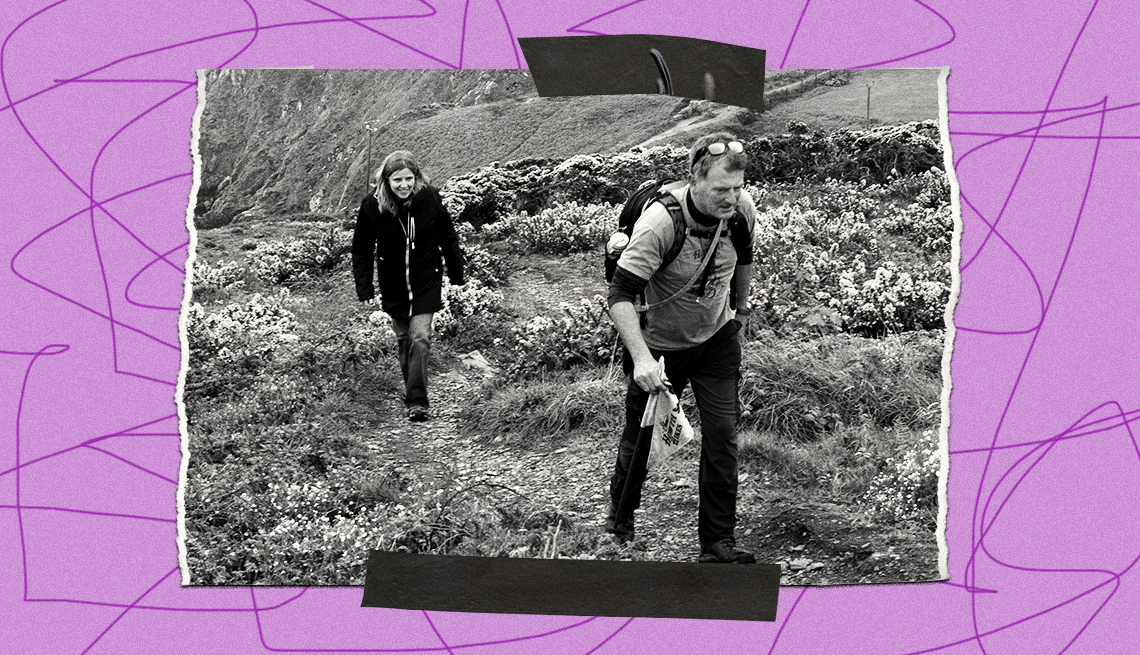Play all audios:
DISCOVERING POETRY AND PLANTS IN IRELAND Usually less than $30, walking tours rarely tax the travel budget. Most guides gladly double as go-to local authorities, offering insights into where
to find the best chowder, live music or any one of myriad other amenities. The finest guides spin yarns with exactly the right mixture of local lore and historical fact. Not surprisingly,
the best weavers I’ve met ply their trade in the Republic of Ireland. Tour guide Tony Kirby is an expert on the topography of Ireland’s Burren National Park. Encompassing 200-square miles,
the area is home to diverse plant life and as well as burial plots that date back to the stone age. Courtesy: Crai S. Bower I’m obsessive about gardens and wildflowers, and Seamus Heaney is
my favorite poet. Imagine my delight when, several years ago, I met guide Tony Kirby, who not only recites Heaney poems, but is familiar with most, if not all, of the 700 plants found in
Burren National Park, the geological marvel on Ireland’s west coast. A native of Limerick with the lilt to match, Kirby wrote the book _The Burren and the Aran Islands – A Walking Guide,_
about this confounding natural region. The Burren — Irish for _boíreann, _meaning a “rocky place” — is a limestone landscape that encompasses 138-square miles. The soil that manages to take
hold in patches here is nutrient-rich, providing habitat for many plants that are found nowhere else in Ireland. A walk with Kirby is not so much about steps as squats, as in kneeling to
examine this panoply of flora, including more than 20 orchid species, few rising more than 4 inches in height. Wild geraniums dot the landscape with gentle brushstrokes, rare dropwort
spreads like a wee pink blanket across the limestone sheet, as do choruses of spring gentian, trumpet-shaped with boldly blue petals. The Burren, which at first looks like a barren
rockscape, unfurls petite flowers upon nearly every step. Kirby notes the presence of hazel, long associated with wisdom in Ireland, as an example of nature’s constant transition. White
hawthorn, a favorite of the faeries, is also recolonizing. Kirby points to one of more than 75 burial plots. These square stones set in a rectangular form date back to the Stone Age. “These
were some of the earliest ‘temples of stone’ for which Druidic culture is known,” he says. “They were portals between the living world and whatever they believe came afterward.” As we stand
beside these well-worn stones, Kirby clears his throat and recites “Postscript,” a beloved Heaney poem about the Burren that begins: “And some time make the time to drive out west / Into
County Clare, along the Flaggy Shore…” The next morning, I drive 12 miles from the Burren to the Cliffs of Moher. Plenty of trails have been trodden across Ireland in the 2.6 million years
since the Stone Age began, so it’s with some surprise that we meet the creator of the 15-year-old Doolin Cliff Walk Experience, Pat Sweeney. The Sweeney family has farmed above the Cliffs of
Moher for five generations, running pastures to their fenced terminus within feet of the dramatic precipice. The guided Doolin Cliff Walk Experience along the Cliff of Moher offers stunning
views of the Aran Islands. Courtesy: Crai S. Bower In 2007, Pat asked his agricultural peers, including his dad and grandad, if they’d be willing to move their fences to allow for a walking
path to pass from the village of Doolin to the Visitors Center. All 39 farmers agreed to, in Pat’s words, “give people a view of the Cliffs of Moher they could never imagine.” Note that the
fences were moved only slightly back from the cliffs. A gentle climb, this is not a trail for the acrophobe. The public path rarely diverges more than 6 feet from the edge. “I wanted
everyone to enjoy this view of the Cliffs of Moher,” Sweeny says, “to absorb their magnificence.” And magnificent they are. Our tour meets outside Gus O’Connor’s Pub, where breakfast can be
ordered, though I recommend forgoing an Irish coffee until after the cliff walk is complete. Sweeney arrives a few minutes late, owing, he says, to an escaped steer. We’re on the trail in a
heartbeat, walking beside a sea of pink flowers above waves crashing against the sandstone edifice. The vistas of the distant Aran Islands and 220-foot Branaunmore sea stack — a dramatic
shard that remained as the cliff receded — take my breath away.

